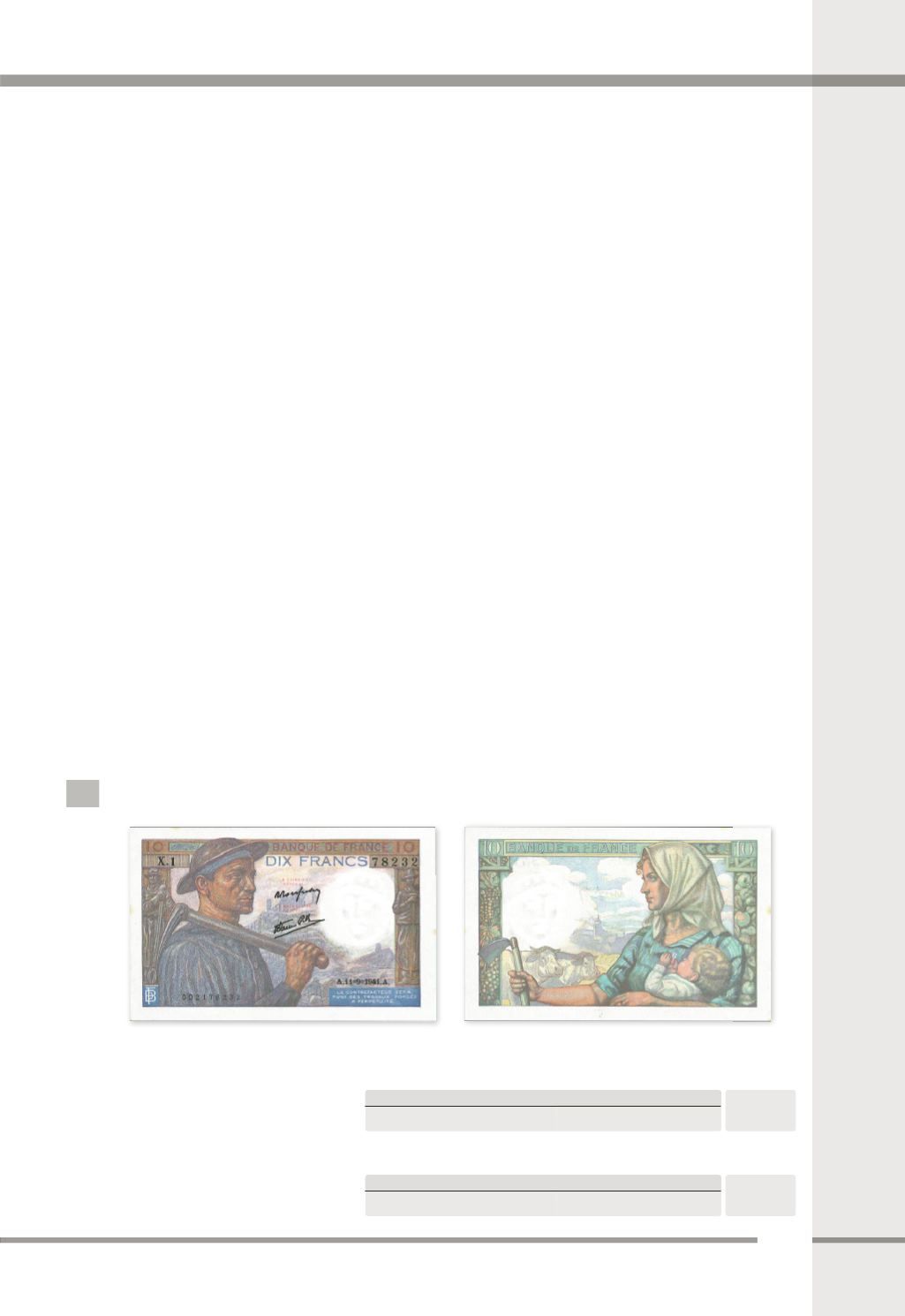

239
BANQUE DE FRANCE -
WORLD WAR II
France was at war again. The symbolism on banknotes had to change. A actual “complete range” was
created with the 5-Franc Berger [Shepherd] (F.05), the 10-Franc Mineur [Miner] (F.08), the 20-Franc Pê-
cheur [Fisherman] (F.13), the 50-Franc Jacques Cœur (F.19), the 100-Franc Sully (F.26) and in a different
style, the 500-Franc La Paix [Peace] (F.32). People are placed at the forefront, a man on the front, a
woman on the reverse side - a shepherd and his companion, a miner with wife and child, a fisherman, and
two women and a child; work, family, fruits, animals, and religious symbols. Everything carries a message;
everything is political. Two famous men, Jacques Cœur and Sully, were added to this view of France.
They were also accompanied by animals and the virtues of nature. Amid these images, the parentheses
with a different style and symbolism on the 20-Franc “Science et Travail” [Science and Work] (F.12) is
peculiar. This bill was only printed for two years then quickly replaced by the more “compliant” fisherman.
The same mishap occurred with the Descartes bill (F.27 1942), which represented Victory engraving the
word Peace (PAX) whereas France was occupied at the time. We now find it surprisingly cynical.
There was also a proliferation of larger denominations, 1,000 and 5,000 Francs, during the war. The
Ceres and Mercury 1,000-Franc banknote issued between the two world wars is still present. It was is-
sued until July 18, 1940. Then the following appeared - the 1940 “Commerce et Industrie” (Commerce
and Industry) issued in 1944 (F.39) and the Goddess Demeter in 1942 (F.40). For the 5,000-Franc
note, the Flameng draft (F.43) was pulled out of the reserves and placed in circulation. This extraor-
dinary bill existed since 1918. It sat for twenty years in the Banque de France cellars before being
presented to the public. At the same time, the optimistic 5,000-Franc Victoire (Victory) bill from 1934
was also placed in circulation; three variations followed (F.44, 45 and 46), then in 1942, the magnificent
5,000-Franc French Empire bill (F.47) was printed. It wasn’t placed in circulation until June 5, 1945 to
replace the two previous versions which were too sullied by the black market and other misconduct.
Right in the middle of this financial unrest, the French discovered the 300-Franc bill (F.29) with an
unusual face value and a different style. It is an exception in the history of the Banque de France. Even
now, no collection is complete without a 300-Franc bill. In 2001, during the auctioning of the Léon Per-
noud collection, we had the pleasure of presenting 25 letters of 300 Francs in remarkable condition.
This series is still the finest and most complete that we know of. The war ended, the post-war boom
was imminent, the bill had to change and it was definitely going to change.
10 FRANCS MINEUR
4080266
F.08.01
P.099a
11 septembre 1941
Alph.X.1 n°78232.
Infimes rousseurs.
140
�����������������
220
pr.NEUF
aUNC
État
Grade
Départ
Estimation
4080267
F.08.19
P.099f
04 décembre 1947
Alph.F.158 n°67420.
20
��������������������
35
NEUF
UNC
État
Grade
Départ
Estimation


















